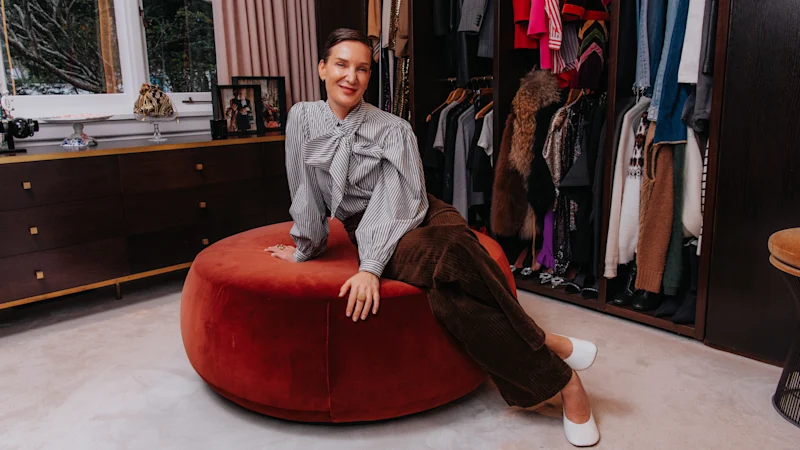By Stephen Crafti
Copyright brisbanetimes

Donna Cameron, a Melbourne fashion stylist who operates her own business, DC Style, has consulted on wardrobes across the globe. “A wardrobe that works is generally one that’s organised – jackets together, skirts in one section and other items all having their own place. I also recommend colour-coding clothes, like some do with the spine of books on shelves.” Another tip is to use the same type of hanger throughout a wardrobe to ensure there’s a consistency with the length of each garment.
‘Womb-like’ room
In a house overlooking the harbour in Sydney’s Vaucluse, owner Sascha* has created a dressing area from a single bedroom, while her husband’s clothes are kept in the main bedroom’s built-in cupboards. Sascha acknowledges that setting aside an entire room for a wardrobe might appear an indulgence, but it’s something she’s dreamt about since she was a child. “I grew up appreciating great clothes,” she says. “My parents and grandparents took extreme pride in the way they dressed. And although I’m working as an academic, I see my passion for clothes as like an ‘accessible art practice’.”
Sascha relishes creating a look from her extensive wardrobe, deciding on a certain character for how she wants to dress that day – maybe Lady Diana Spencer at Balmoral Castle in 1981 in a Fair Isle jumper or model Jerry Hall entering New York’s Studio 54 nightclub in the late ’70s. There’s also a fair dose of plaid to choose from, also influenced by Princess Diana as well as numerous designers from the 1980s, including Vivienne Westwood.
Sascha takes pleasure from wearing the outfits when she’s out and about, but also at home. But there is also the joy of just looking at them. “I enjoy seeing my clothes as much as wearing them,” she explains. Pointing to a red velvet ottoman in the centre of the dressing area and a colour scheme of soft pink hues, Sascha says that her brief to architectural and design firm Pohio Adams was to create a space that felt womb-like. “Sascha wanted a place where she could enjoy dressing as well as having a girlfriend or two coming over to see what she’s just bought,” says Bianca Pohio, a director of the practice, who works with her life and business partner, architect Christopher Adams.
The dressing area comprises open-fronted, dark-stained white oak veneer wardrobes on opposite sides. Brass hooks on the outside of the wardrobes, designed by Henry Wilson, allow clothes to be displayed front-on and made easier to accessorise. A built-in credenza, supported on slim brass legs, is finished with an oak top edged in brass. Incorporating 12 drawers, it houses sunglasses and scarves higher up and jumpers lower down. The top of the unit is used to display bags and objets d’art.



